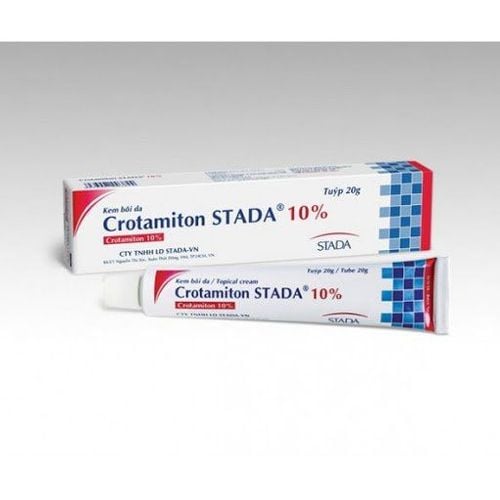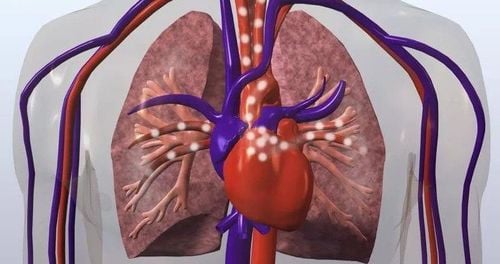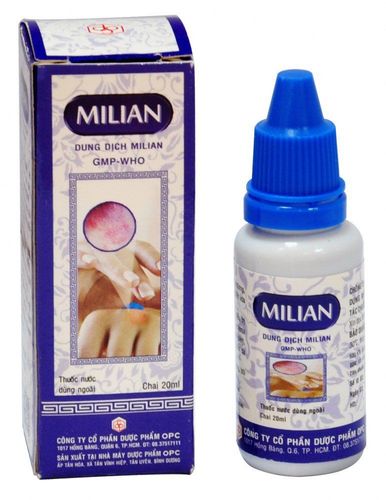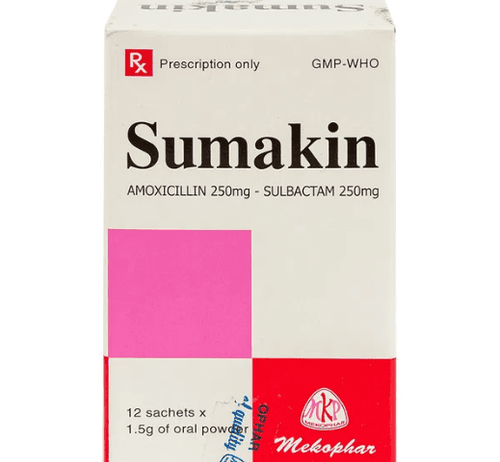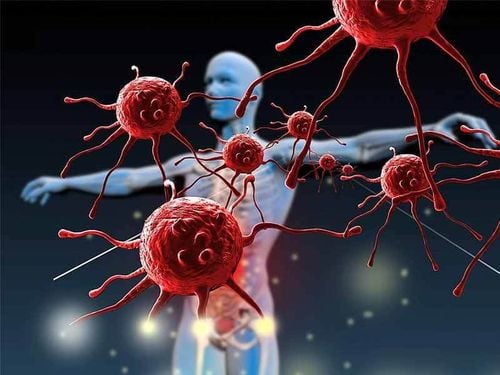This is an automatically translated article.
Posted by Specialist II Nguyen Thi Tam - Head of Pediatric Unit II - Pediatric Center - Vinmec Times City International Hospital
Staphylococcal scalded skin syndrome (SSSS) is an acute epidermal detachment caused by infection with exotoxin-producing strains of staphylococci. Symptoms are widespread blisters and shedding of the epidermis. It is common in infants and children under 6 years of age, but can also affect older children and adults when seriously ill.
1. Staphylococcal peeling syndrome
Staphylococcal scalded skin syndrome (SSSS) is an acute epidermal detachment caused by infection with exotoxin-producing strains of staphylococci. Symptoms are widespread bullae with sloughing of the epidermis. The illness is often accompanied by fever, irritability, fatigue, and poor appetite. Accordingly, the disease is mainly seen in infants and children under 6 years of age, but also in older children and adults when seriously ill. Previous terms for neonatal staphylococcal scalded skin syndrome include Ritter's disease and neonatal Pemphigus disease.The disease occurs year-round, peaking in summer and autumn. Incubation period: 1 - 10 days. Diagnosis is based on clinical symptoms, sometimes with biopsy. Anti-staphylococcal antibiotic treatment and topical care. The disease has a good prognosis if treated promptly. Mortality: 0.3% in children and about 4% in adults.
SSSS occurs when exotoxins produced by staphylococci spread through the bloodstream from the site of infection through the skin. Pathogenic staphylococcal strains produce exfoliative toxins A and B, which are able to cleave Desmoglein 1, a protein responsible for the adhesion of keratinocytes to keratinocytes in the superficial epidermis. These toxins directly attach to desmoglein 1, causing broken bridges, disrupting the granular layer of the epidermis, forming vesicles, causing epidermal detachment.
Characteristic symptoms include: diffuse skin pain and progressive erythema, as well as superficial blistering and scabbing like burned skin. Specifically:
The earliest detection on the skin is erythema, macular and skin pain. Erythema usually develops within 24 - 48 hours, the erythematous nodules begin to appear in areas of the skin that are red, blistered, and pustules around the eyes, nose, mouth, armpits, inguinal folds and buttocks. , then appear wrinkles, shallow erosion in places subject to friction such as the perianal area. The red skin quickly spreads to the whole body, on the skin surface appears soft blisters, very shallow, undefined, edematous, easy to slip, the blisters sometimes link together into a wide patch, even Small bumps can also cause surface abrasions of large patches of skin, leaving a moist red background.
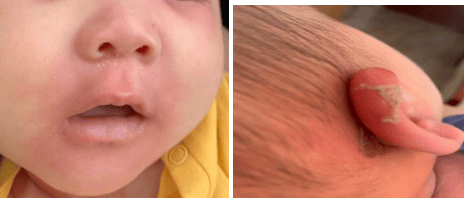
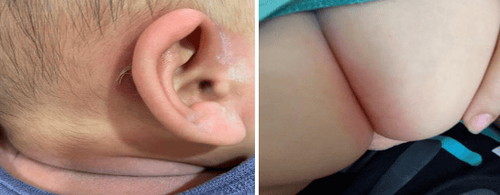
Radial fissures often develop around the mouth, nose, and eyes. Scaly, fissured erythema produces a sad face in children with SSSS. The surface resembles dry oatmeal.
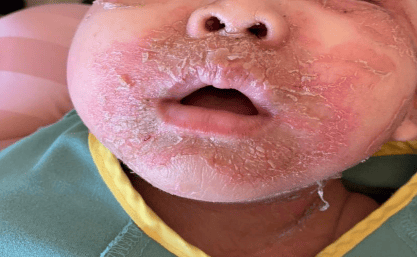
Positive Nikolsky sign (Signs that when gently rubbing the skin causes peeling of the outermost layer).
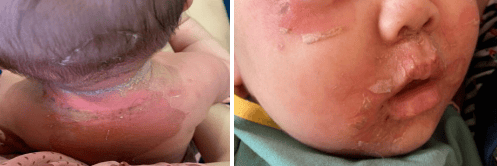
Accompanied by systemic symptoms including fever, irritability, fatigue and poor appetite.
The site of primary staphylococcal infection is often unclear. Findings suggestive of infection include purulent drainage of the conjunctiva and middle eyelids of the eye in conjunctivitis, impetigo, honey-yellow crusts of the nostrils, perinasal skin, perianal erythema, pustules or other scaly areas of the skin. In neonates, staphylococcal infections may appear as erosive, purulent, or scaly patches around the base of the umbilicus or the circumcision site.
Skin erythema and pain usually subsides significantly within 2-3 days after starting treatment. Areas of corrosion and scaling usually have significant improvement within 1-2 weeks. Patients may continue to have pain, erythema, and peeling of the skin for several days despite appropriate antibiotic therapy. Persistence of symptoms can be attributed to the presence of toxins in the blood and tends to be most prolonged in neonates. This is associated with poor renal clearance or lower neonatal immunity to staphylococci.
Serious complications involve extensive skin loss and include secondary infections such as sepsis, hypovolemia, electrolyte imbalance, and death.
2. Diagnosis of staphylococcal peeling syndrome
The diagnosis of SSSS is made based on history and symptom finding. Culture of bacteria at sites of suspected staphylococcal infection to confirm staphylococcal infection and provide information on antibiotic susceptibility. In difficult cases, histopathological examination is necessary to confirm SSSS.
Clinical features consistent with SSSS include:
Widespread erythema, which may turn white. Soft bubbles, superficial peeling, and shallow erosions No mucosal involvement Evidence of concomitant staphylococcal infection of skin, conjunctiva or visceral organs Positive Nikolsky sign. Differential diagnosis of staphylococcal peeling syndrome with the following diseases:
2.1. Burn
Differential diagnosis with burns, superficial and deep damage depending on the degree of burns
2.2. Steven-Johnson syndrome (SJS) and Toxic Epidermal Necrosis (TEN)
Characterized by fever and mucosal skin lesions leading to necrosis and desquamation of the epidermis. SJS skin lesions < 10% body area, TEN > 30%. SJS/TEN skin damage 10-30%. The cause is usually due to drugs (Commonly Sulfamide drugs and antiepileptic drugs...). In addition, there are other causes such as:
Bacterial (Mycoplasma pneumoniae, Klebsiella pneumoniae. natural holes.
2.3. Bullous moment
This is a superficial bacterial infection of the skin characterized by pustules, blisters, and crusted abrasions. Commonly found on exposed skin such as face, hands, feet. At first, small pimples then grow into blisters, shallow blisters, easy to break, can damage deep ulcers...2.4. Toxic shock syndrome
A systemic disease that affects the entire body. The bacteria that often cause this syndrome are Staphylococcus aureus and streptococcus. Symptomatic disease: Fever, rash, peeling skin and low blood pressure. Due to streptococcal death ~ 50% (uncommon), due to staphylococcal death ~ 4%.
2.5. Scarlet fever
Is a disease caused by the toxin of Streptococcus A bacteria. The illness usually begins with a sudden onset of fever, sore throat, swollen neck glands, headache, nausea, red tongue, fatigue, and body aches. Characteristic red, pink, glossy, touch feels like sandpaper, covering the whole body. ...
2.6. Kawasaki disease
An acute febrile illness with diffuse inflammation of the small and medium vascular system of unknown etiology. The disease usually presents with high fever for more than 5 days, bilateral conjunctivitis, changes in the oral cavity such as dark red lips, succulent or oozing blood, red edema of the oral cavity, red tongue with spikes like strawberries, purple hands and feet, etc. generalized erythema multiforme, may have lymphadenopathy > 1.5 cm, non-purulent...2.6. Pemphigus
Severe skin burns can be fatal. This is an acute or chronic progressive autoimmune disease, with circulating IgG autoantibodies against the cell surface, destroying the bonds between cells, creating blisters in the epidermis.
3. Treatment of staphylococcal peeling syndrome
The treatment of SSSS includes eradicating the causative staphylococcal infection and supportive care to promote healing, relieve pain, and reduce complications.
Patients with SSSS are often required to be hospitalized for intravenous antibiotic therapy and supportive care. With adequate treatment, the prognosis is good. Most patients make a full recovery within 2-3 weeks without scarring, significant disfigurement, or other long-term sequelae.
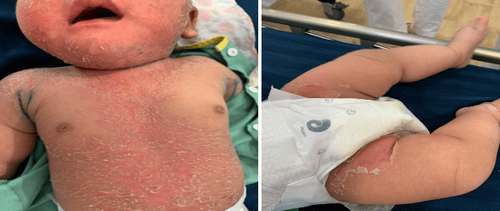
Antibiotics should start treatment with antistaphylococcal antibiotics immediately. Choose antibiotics from Penicillin, oxacillin or 1st generation cephalosporins or vancomycin...
4. Prevention of staphylococcal peeling syndrome
Prevention of SSSS involves minimizing the risk of transmitting exotoxin-producing staphylococci strains to others, especially young children and those at risk.
Precautions are especially important in neonatal homes, neonatal intensive care units, and sick facilities such as long-term care and inpatient facilities. Care for patients with SSSS by: Sanitizing hands, trimming fingernails, following appropriate precautions in healthcare settings, using standard precautions, and contact precautions during illness . Up to 40% of adults are asymptomatic staphylococcal carriers. In health facilities, it is possible to screen health care workers and caregivers to detect the source of an outbreak.
Staphylococcal peeling syndrome can occur in both adults and children. The disease has a good prognosis if diagnosed and treated promptly. Therefore, when symptoms of the disease appear, the patient should be taken to a reputable medical facility for examination and treatment.
Pediatrics department at Vinmec International General Hospital is the address for receiving and examining diseases that infants and young children are susceptible to: viral fever, bacterial fever, otitis media, pneumonia in children, ... With modern equipment, sterile space, minimizing the impact as well as the risk of disease spread. Along with that is the dedication from the doctors with professional experience with pediatric patients, making the examination no longer a concern of the parents.
Please dial HOTLINE for more information or register for an appointment HERE. Download MyVinmec app to make appointments faster and to manage your bookings easily.





